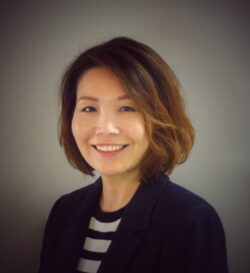Shaping a more inclusive workplace with payroll and flexibility
- Shawn Liew

As the world celebrates International Women’s Day this month, this year’s theme of Inspire Inclusion is a timely one as many organisations look to empower more female employees to thrive in a more inclusive work culture.
These include ensuring that female employees are recognised and rewarded for their key contributions to their organisation’s success and are not overlooked in favour of their male counterparts.
Encouragingly, where APAC is concerned, it would appear that efforts to bridge the gender pay gap is beginning to bear fruit, as Yvonne Teo, Vice-President of HR, APAC, ADP, told HRM Magazine Asia, “The gender pay gap does not appear to be a major source of dissatisfaction in the APAC region. In our People at Work 2023 report, we found that the gender pay gap did not crack the top ten reasons why people feel dissatisfied with their jobs. In fact, most respondents (55%) feel that their organisations have gotten better at gender pay equality compared to three years ago.”
ADP attributed this to most female employees being satisfied with their salaries (53%) and most feeling that their salary matches their skill sets (77%). Conversely, male respondents are more likely to feel that their salaries could better reflect their job skills (69%) and responsibilities (69%).
“Gender pay equality refers to the principle of ensuring that individuals receive fair compensation for their work irrespective of their gender. It aims to eliminate wage gaps and promote fairness in remuneration, addressing historical disparities that may exist between men and women in the workplace. Achieving pay equality involves creating policies, practices, and a work culture that intentionally creates opportunities for women and compensates employees based on their skills, experience, and performance,” Yvonne added.
One key tool that can help to create gender pay equality is likely to be lying in plain sight because many organisations perceive it as nothing more than a back-office function.
 “Gender pay equality refers to the principle of ensuring that individuals receive fair compensation for their work irrespective of their gender”. – Yvonne Teo, Vice President of HR, APAC, ADP.
“Gender pay equality refers to the principle of ensuring that individuals receive fair compensation for their work irrespective of their gender”. – Yvonne Teo, Vice President of HR, APAC, ADP.
Yvonne suggested that C-suite leaders can use payroll data to identify compensation gaps across age, racial, and gender lines without biases or judgments. Payroll can also allow leaders to formulate strategies to ensure fair pay.
“For example – where do the biggest pay gaps exist, in which department, and at what seniority? Do female employees wait a longer time between pay rises or promotions, compared to males? How much does their pay increase each time?”, she explained.
“These are quantitative questions for which answers can be gleaned from neutral data insights. If done properly, gender pay equality can help to retain or even attract new talent.”
Flexibility drives innovation in creating an inclusive workplace
For female employees juggling work-life responsibilities, the ability to enjoy flexible working hours cannot be understated.
ADP’s People at Work 2023 report found that work flexibility (27%) is among the top five priorities for female employees in APAC, with most of them (74%) feeling positively empowered to take advantage of flexible working arrangements.
Organisations should note that respondents to ADP’s report expect flexibility at work to be a given, and not a benefit. While most female employees are currently satisfied with their work flexibility (58%) when compared to male employees (51%), employers must continue to revise their strategies to create an inclusive and supporting work environment.
Yvonne said, “A flexible work environment enables employees to balance their personal and professional commitments, resulting in a happier, more fulfilled workforce. This is essential for retaining and attracting talent, which is crucial for sustainable business success.”
“At ADP, we strongly believe that every individual matters and are committed to promoting diversity, equity, and inclusiveness in our workplace. Our company offers family-friendly leave policies, medical subsidies, and a flexible work environment to support our staff.”
READ MORE: Payroll evolution: Enhancing accuracy, compliance, and employee experience
“We have implemented several programmes and initiatives to promote gender diversity in leadership roles, including ensuring equal representation of male and female candidates during recruitment. Furthermore, we have established the International Women’s Inclusion Network to engage, equip and empower women to achieve personal and professional success. We are delighted to share that half of our senior leadership team in the APAC region are women,” Yvonne added.
ADP’s annual People at Work report explores employees’ attitudes towards their work and their expectations for the future, making it a timely and accurate measurement of how employees feel towards trending HR topics and issues every year.
The People at Work report for 2024 will be released this April and will provide the latest findings and sentiments on topics such as flexible working arrangements, DEI policies, job satisfaction, and more.
Sign up here to be among the first ones to receive the report.






